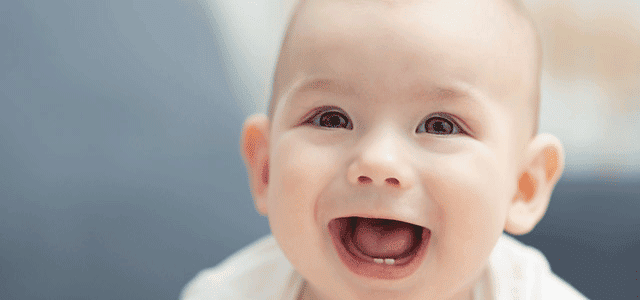
Is your baby acting extra fussy while eating? Have you noticed white patches in their mouth when they cry? No worries, it’s normal for them to be upset. This might be caused by a yeast called Candida albicans, known as thrush. It’s a common oral infection in babies, though not too serious. Wondering how to get rid of thrush? Read on to find!
What is Thrush?
Candida albicans is a white fungus that can live on your body harmlessly. Sometimes, it grows too much and causes thrush. You’ll see white patches in your baby’s mouth, diaper area, and possibly even on your nipples. If you’ve had a vaginal yeast infection, you’re familiar with this fungus. It can cause discomfort but don’t worry, it’s usually easy to treat.
What Causes Thrush In Babies?
Thrush often appears in babies’ mouths in their first weeks or months, and if you’re wondering how to get rid of thrush, no one’s sure why, but it could be because their immune system isn’t strong yet. This often happens after using antibiotics, which can make the fungus grow more. Steroid medicines or Candida from a vaginal yeast infection during pregnancy could also be reasons for thrush in babies, they might pick it up in the birth canal.
Symptoms Of Thrush In Babies
Take a look inside your baby’s mouth.
- Do you see any sores or white patches on their gums, tongue, or the inside of their mouth?
- Are the corners of their mouth cracked?
If you notice these things, it might be thrush. But don’t worry, sometimes a white tongue can be from milk and should go away within an hour after feeding.
You can do a simple test by wrapping gauze around your finger and gently wiping the marks. If they go away, everything’s fine. If not, and your baby’s tongue is red and sore with the white patch, it might be thrush and you should treat it.
Thrush can also show up in other places, like your baby’s diaper area. If there’s a stubborn red rash with dots, it could be thrush.
How To Get Rid Of Thrush in Babies?
Thrush is a problem in the mouth that can be fixed with anti-fungal medications. One of these medicines is Nystatin, a topical medication that’s put on the baby’s tongue. Instead of just dropping the medicine, parents can use something like an ear cleaner to put it gently on the baby’s tongue. This is done after the baby eats so that the milk doesn’t wash away the medicine.
Home Remedies For Thrush in Babies
While natural remedies can sometimes work for yeast infections like thrush, it’s a good idea to talk to a healthcare provider about it. Here are some natural home remedies for thrush:
Diet changes
To start, if your child is eating solid foods, you can try reducing the amount of sugary foods they eat. Since thrush, which is basically yeast, likes sugar, it makes sense that cutting down on sugary things in their diet can help prevent oral thrush. This includes fruits, sugary snacks, juice, refined carbohydrates, and sweeteners, which your baby shouldn’t have much of anyway.
Saltwater
Salt doesn’t just clean wounds, but this method of how to get rid of thrush makes the discomfort feel better. Mix half a teaspoon of salt in a cup of warm water. Use a soft cotton swab to put this salty water on the white patches in your mouth. It might help you feel more comfortable.
Baking soda
We can use watered-down baking soda (sodium bicarbonate) to help with thrush issues. Mix half a small spoon of baking soda in a cup of warm water, and put it on your child’s thrush using a soft cotton stick. You can also use this paste on your nipples before feeding your baby (just clean it off before your baby starts feeding).
Virgin Coconut oil
How to get rid of thrush with oil? Because of something called caprylic acid found in coconut oil, this gooey stuff might be useful for treating a baby’s thrush. Just put it on the white patches in your baby’s mouth using a cotton swab. But before you do this, make sure your baby isn’t allergic to coconut, and keep an eye out for any bad reactions after you use it.
Yogurt
Plain yogurt contains lots of tiny living things called bacteria, like Lactobacillus bulgaricus, which are very helpful and can make a good balance in your baby’s mouth, and this balance can stop a problem called thrush from getting worse. Thrush is caused by a bad fungus called Candida albicans, which really likes sugar, so understanding how to get rid of thrush with yogurt can be important.
So, it’s best to choose yogurt without any flavors or sugar. If your baby is too small to eat yogurt, you can put a little bit on the sore areas in their mouth using a soft stick. You can also look for special good bacteria for babies.
Grapefruit Seed Extract (GSE)
You might want to avoid using this product, even though people say it can cure infections. The problem is, it’s difficult to know how the product is actually made. An older study discovered some irritating and banned chemicals in one version of the product, even though these chemicals are not supposed to be in the main ingredient of the product.
Tea Tree Oil
Mix 1 or 2 drops of tea tree oil with half a cup of water that has been boiled and cooled down. Then, use a clean cotton bud to put this mixture on your skin.
Other Treatment For Thrush In Babies
Now that you have the diagnosis and the home remedies, you need to medically treat the culprit of its stil a menace. Here’s a rundown of your medical and OTC options for oral thrush in babies:
Medical Treatment
Nystatin oral drops are a usual medicine for the baby, and a cream form of the same medicine is given to the mother for her breasts. If the tubes carrying milk in the mother’s breasts are affected, she might need to take medicine by mouth to treat that part. The doctor might suggest other options too.
Over-The-Counter Treatment
If your baby has a rash in the diaper area or on the head because of thrush, you might be able to use antifungal creams that you can buy without a prescription. But before you consider how to get rid of thrush with those creams, it’s important to talk to your baby’s doctor. If your baby is a bit older, the doctor might tell you to give her something called “lactobacilli,” which is like friendly bacteria. This helps fight the fungus causing the rash. You can buy these friendly bacteria as a medicine, but make sure to pick a good one that’s safe for babies.
How to Prevent Thrush From Recurring?
Candida is like a tricky germ that can easily spread. It’s a special kind of fungus that can change its form from a tiny yeast to a mold. This clever skill helps Candida to move around, stay alive, and make people sick. It’s important to treat both you and your baby so that Candida doesn’t go from your baby’s mouth to your nipple and back again. Whether you follow our home remedies for thrush or use prescription medications, make sure you follow the following prevention tips:
Here’s a general list of prevention tips to help your baby from thrush:
- Wash your baby’s toys, hands, and pacifiers thoroughly.
- Launder clothing, towels, and bras that may have come in contact with the fungus. The best washing practice is to set a hot wash cycle.
- If you’re using a breast pump, keep your milk refrigerated only until just before use. This prevents the growth of all kinds of yeast.
- Always sterilize your breast pump and all its parts.
Here’s a general list of prevention tips to help you from thrush:
- Always dry your breasts after every feeding.
- Don’t use disposable nursing pads that have a plastic backing.
- Always change your wet nursing pads.
- Consider cutting down on the amount of sugar you eat. A study from 2017 found that having too much sugar in your body might help Candida to grow. But don’t worry too much about it, because this idea hasn’t been completely proven yet. So, if you want to ignore this suggestion, it’s okay, especially when you’re feeling stressed and want to eat chocolate. Maybe try to pick chocolates with less sugar, like dark chocolate.
An Endnote
Thrush and Breastfeeding
Breastfeeding parents may have painful thrush in their areolas, nipples, and breasts, which can hurt even more if their nipples are cracked or if they have a vaginal yeast infection. When thrush affects the breasts, it can make breastfeeding painful too, and the pain right near the areolas or nipples might spread through the whole breast and last for an hour after nursing. If you’re wondering how to get rid of thrush while breastfeeding, it’s important to consult a healthcare professional for proper guidance and treatment.
Additional symptoms of thrush on breasts may include:
- Itchy, pale nipples with white patches
- pale areolas with white patches
- Burning nipples (may or may not last long)
- Shiny skin on or near the nipples
- Flaky nipples and areolas
If you have thrush, the shiny skin on your breasts or nearby can pass the bacteria to your breast milk and anything that comes into contact with your breasts. This includes:
- hands
- nursing pads
- nursing bras
- clothing
- burp clothes
- towels
If you have a yeast infection down there, you might be more likely to get thrush on your breasts. Your baby can pass oral thrush to you while breastfeeding. Even changing their diapers could give it to you if the fungus is in their poop.
Don’t worry, your baby will get some medicine for their mouth. But remember, the medicine doesn’t usually go into your breasts, so you’ll need your own prescription too. Thrush could make your milk go down and make breastfeeding a bit tricky while you and your baby are feeling unwell. But you can still breastfeed while getting treated, which is good for keeping your milk flowing.
Thrush might take about two weeks to go away completely. Just make sure you take all your medicine and stay clean to avoid it coming back. Oh, and don’t use any milk you pumped while you were sick – throw that away.










